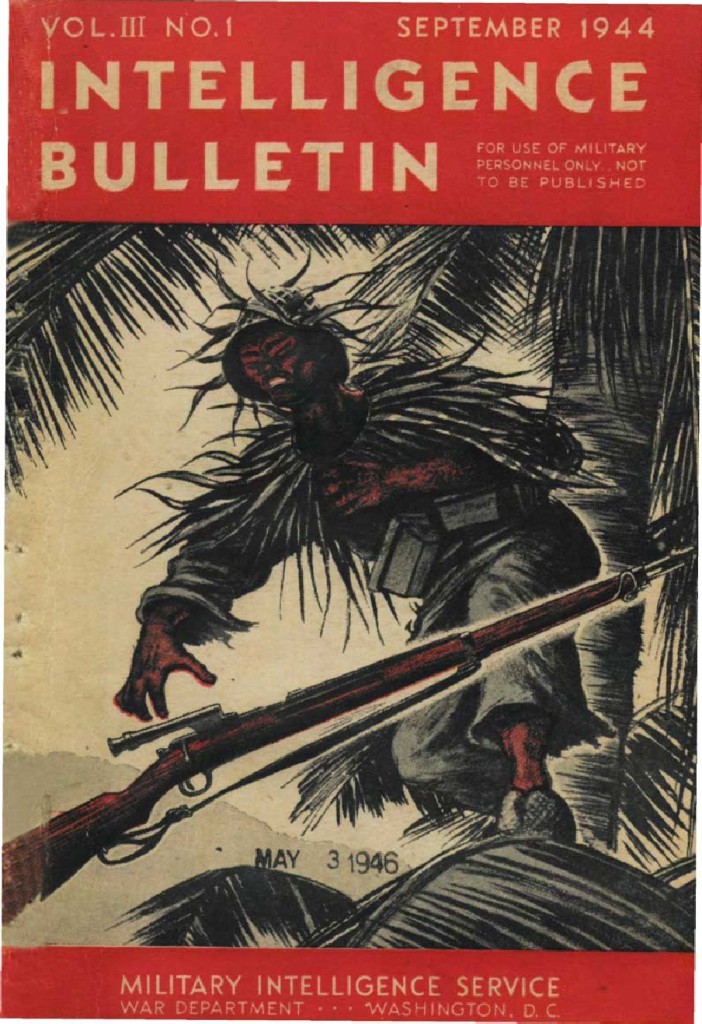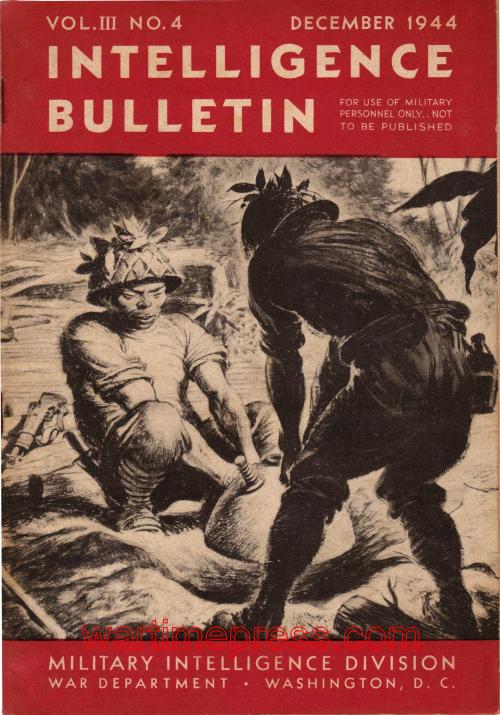Chinese or Japanese? Telling Friend From Foe
- By Peter Harmsen
- 3 October, 2013
- 13 Comments
 In early 1945, it was obvious that the Japanese had lost the war, but it was still unclear how much longer they would hold out or where the final stages of the conflict would be fought. Various scenarios were likely enough to be seriously considered. It was not impossible that large numbers of US troops would end up fighting the Japanese on Chinese soil. And one question arose: How to tell Japanese foes from Chinese friends? This was the subject of an article in the March issue of Intelligence Bulletin, a publication distributed among US military personnel.
In early 1945, it was obvious that the Japanese had lost the war, but it was still unclear how much longer they would hold out or where the final stages of the conflict would be fought. Various scenarios were likely enough to be seriously considered. It was not impossible that large numbers of US troops would end up fighting the Japanese on Chinese soil. And one question arose: How to tell Japanese foes from Chinese friends? This was the subject of an article in the March issue of Intelligence Bulletin, a publication distributed among US military personnel.
“Is it really possible,” the magazine writer asks, “to tell a Japanese from a Chinese? In other words, can you tell your enemy from your ally? The answer is simple: Most of the time you probably won’t be able to spot the Jap unless he’s dressed in the Imperial Army uniform… In many cases, trying to tell a Japanese from a Chinese by physical appearance alone is like trying to tell a German from an Englishman in a shower bath before you’ve heard either man speak.”
The writer goes on to explain that the issue has already arisen during the campaign to take back the Philippines, where Japanese have tried to pass themselves off as Filipino guerrillas. He warns that infiltration by enemy agents – similar to the English-speaking Germans creating havoc behind American lines in the opening stages of the Battle of the Bulge – is likely to become more frequent in the future.
He argues that the average Japanese is very hard to distinguish from the average south Chinese, adding, however, that “in a great many cases the heavy beard and body hair of the average Japanese peasant will distinguish him almost at once from the particularly hairless South Chinese. Also, the Japanese usually have poor teeth. Extensive dental repair is common among the Japanese, who have a particular fondness for gold fillings. The Chinese have better, straighter teeth, which are less marked by dentistry.”
Language is another shortcut to identification, as the article argues Japanese have a hard time pronouncing the English “l”, while south Chinese find English “r” more difficult: “If you are in doubt as to the nationality of an oriental you have found wandering around in your rear area, try him with a sentence like, ‘Robin left the lousy rug.’ A Jap with little practice in English will repeat something like, ‘Robin reft the rous-sy rug.’ A South Chinese would tend to say, ‘Lobin left the lousy lug.’”
Posture, too, can help in determining nationality: “If you can’t work the language on the suspect, make him walk, preferably without his shoes. Frequently the posture of the Jap is poor, and he is inclined to hunch slightly and shuffle along while walking. The next time you ambush a column of Japs on a trail, notice how they move with short, choppy steps— before the shooting starts. Conversely, the Chinese from North China and the interior are accustomed to standing upright, and will generally walk with a stride much like our own.”
Japanese may also have a wide space between their great and second toes. This is because many have been used at home to wearing wooden clogs held to their feet by leather thongs between these two toes. Finally, the article says, some Japanese may be wearning their G-string type underwear, “and maybe you’ll also find a wide cloth belt embroidered with numerous stitches —the ‘belt of a thousand stitches’ which is supposed to bring the wearer luck in battle.”
 A last piece of advice: “While you are questioning the suspect, watch his face. Remember that the Chinese smile easily and naturally, and that the Jap, particularly if he is expecting to be shot, is generally pretty solemn. Remember also that it is habitual for most Japanese, when speaking, to inhale quickly at intervals through their teeth. A flustered Jap may fall unconsciously into that ingrained habit. But if you fail to make a positive identification, your best bet is to hustle him to the MP’s.”
A last piece of advice: “While you are questioning the suspect, watch his face. Remember that the Chinese smile easily and naturally, and that the Jap, particularly if he is expecting to be shot, is generally pretty solemn. Remember also that it is habitual for most Japanese, when speaking, to inhale quickly at intervals through their teeth. A flustered Jap may fall unconsciously into that ingrained habit. But if you fail to make a positive identification, your best bet is to hustle him to the MP’s.”
Eventually, being able to distinguish Chinese from Japanese never turned out to become a major issue for the US armed forces, as major land operations in China did not materialize. History developed differently. But those living in the middle of history could not know this.

 Copyright © 2025
Copyright © 2025
Leave a Reply